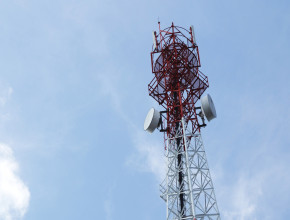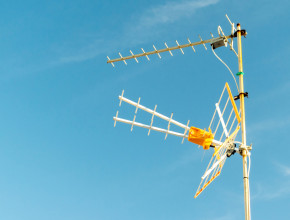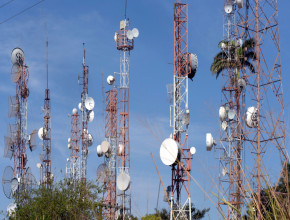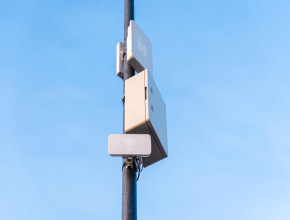
Have you ever wondered how satellites create a connection with Earth? What do you think? Mostly people avoid going deep into such questions because they think that it is technical and complicated to understand the technology behind them. But in this guide, we will make everything easy for you as we are going to discuss satellite antennas. This essential state-of-the-art equipment plays an important role in satellite communications. If you want to explore more about it, let’s get started to understand it in simple words!
What is Satellite Antenna?
Satellite antenna or dish antenna are devices used to establish uninterrupted connections between satellites and ground stations. These devices are essential for satellite communication that enables the reception and transmission of wireless signals. This facilitates users to make connections between satellites in space and Earth.
Satellite TV antennas are the perfect solution for the space environment. However, they also play a crucial role in other applications, such as telecommunications, broadcasting, remote sensing, and navigation. That makes it a flexible wireless solution. And establish reliable communication and data transmission across various platforms and industries.
Types of Satellite Antenna
Satellite antennas are useful in a variety of applications. This is why we can see many types of Satellite dish antenna that are used for different applications. Here we are going to talk about some major types of satellite antennas and their purposes:
Parabolic Dish Antennas
A parabolic dish antenna is a very famous satellite antenna. These wireless solutions come with directional radiation patterns that make them ideal for long-distance communications. Parabolic dish antennas are featured with parabolic reflectors that help focus radio waves onto a specific focal point. This unique structure of parabolic dish antennas allows users to capture and emit signals with high efficiency. Due to these features and functionalities, this wireless solution is very helpful to use in applications such as telecommunication, broadcasting, and research.
Parabolic directional antennas are also used for the transmission and reception of microwave signals. The gain of a parabolic dish antenna is related to the size of the reflector compared to the wavelength. In simple terms, a larger reflector area results in higher gain. You can express it in this formula:
G = 4πA/λ(Power2)
Where A is the area and
λ is the wavelength.
Horn Antennas
A horn antenna is a directional antenna used to interact with microwave frequencies. Horn antennas work with super-high or ultra-high frequencies ranging from 300 MHz to 30 GHz. It comes with a small and lightweight size which makes it an ideal choice to install in less space. Talking about the structure of this wireless solution, the antenna has a horn-like structure that enables users to get a larger directional reach. That helps in easily transmitting and receiving signals from long distances. This directional antenna is used in applications such as radar systems, microwave communication links, satellite communication, radio astronomy, EMC, and others.
Phased Array Antennas
Phased array antennas are a new generation of antennas in the field of antenna technology. The main feature that differentiates this antenna from the rest is the series of small antennas in its structure. The antenna has small individual arrays or elements. Apart from that, the antenna can be redirected at any time without physically moving it. Phased array antennas play a crucial role in deploying low-earth orbit satellites. It makes reliable satellite communication. Furthermore, this satellite dish antenna is used in other applications such as radar systems, satellite communication, 5G wireless networks, electronic warfare, medical imaging, and others.
Helical Antennas
One of the important satellite radio antennas in the field of satellite technology is the helical antenna. This antenna comes with a small and straightforward design and can be used as a directional or omnidirectional antenna. This makes it an ideal choice for satellite communications. The round shape of the helical antenna allows it to have circular polarization, which is essential for seamless and uninterrupted communications in space conditions. The robust and durable design of the antennas makes them suitable for various situations, such as satellite communications, GPS systems, spacecraft telemetry, wireless communication systems, weather radar systems, and others. Helical antennas are also helpful in satellite TV broadcasting and allow users to watch continuously without signal loss.
Patch Antennas
Patch antennas, or microstrip antennas, are last but not the most important satellite antennas. Patch antennas come with a unique design in that they are made of a flat rectangular sheet of metal that is placed over a larger sheet of metal, called a ground plane. Patch antennas come with thick and low-profile characteristics. That allows users to install it in space vehicles. Patch antennas are used for various applications such as mobile devices, wireless local area networks, satellite communications, radio frequency identification, and more. and telemetry.
Why to Choose a Satellite Antenna?
Satellite antennas are essential antennas that you can use for various situations. Today, the demand for satellite antennas is increasing more than ever. This wireless solution allows you to enable wireless connectivity in the harsh environment of space. Additionally, you can use them if you want to get seamlessly connected in remote and rural areas where you do not have access to a strong network. Satellite antennas will give you efficient internet access even in remote areas. This amazing equipment helps in broadcasting and telecommunication, including television broadcasting and military operations.
Wrap It Up
As you learn about satellite antennas, we can conclude that satellite antennas are advanced antennas. The antennas are specialized for providing underrated support in harsh environmental conditions. It maintains seamless transmission and reception of wireless solutions. We hope this guide helps you understand the essence of satellite antennas and their types. However, it is important to consider that each antenna has its specific purposes. Some of them are designed to perform better for military purposes, and others are good for satellites. So you need to think about your specific needs and requirements.





